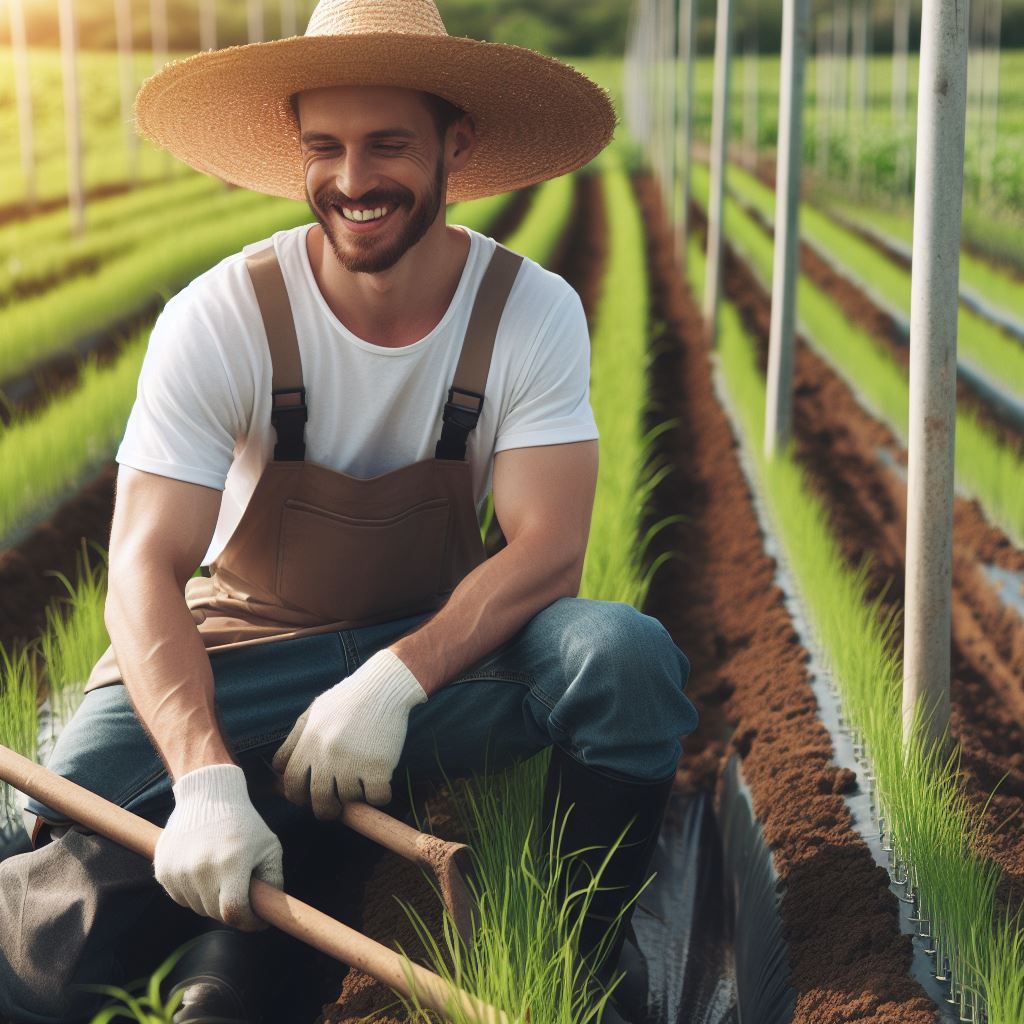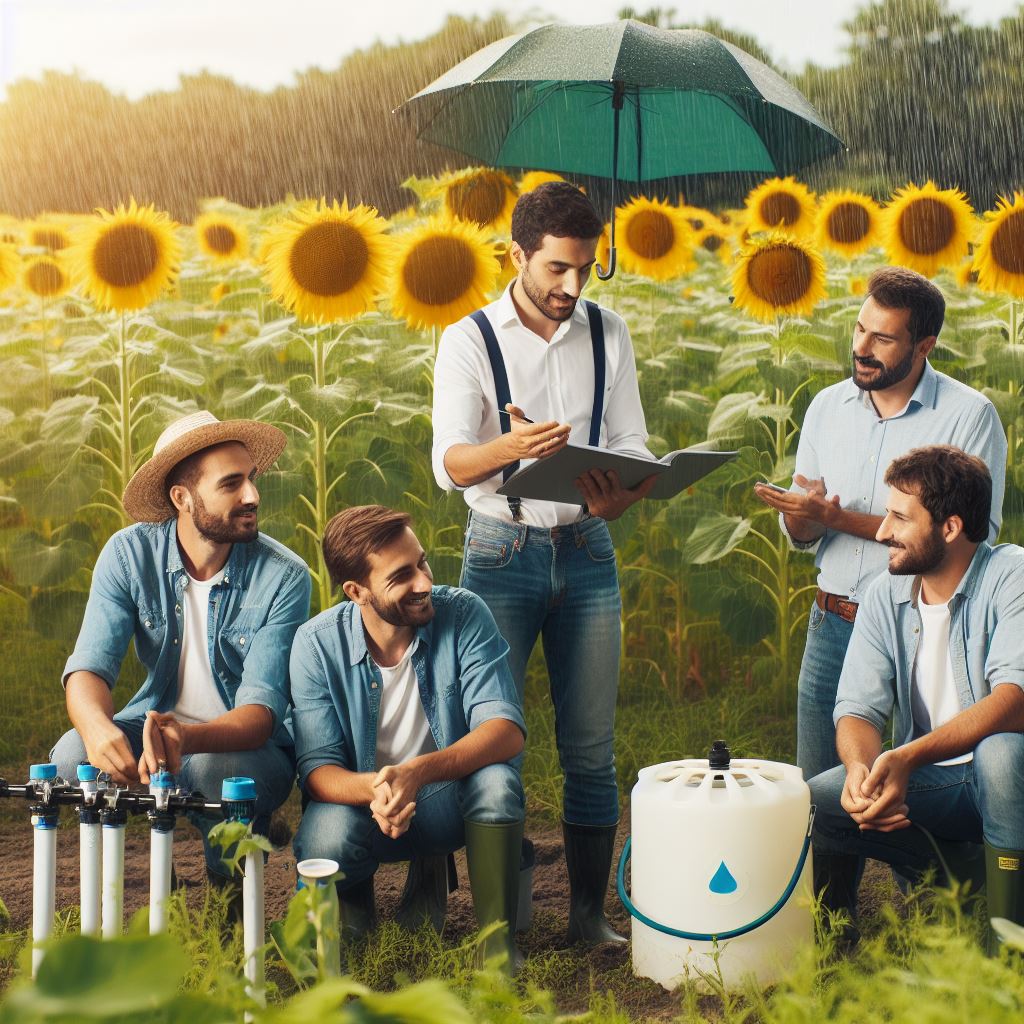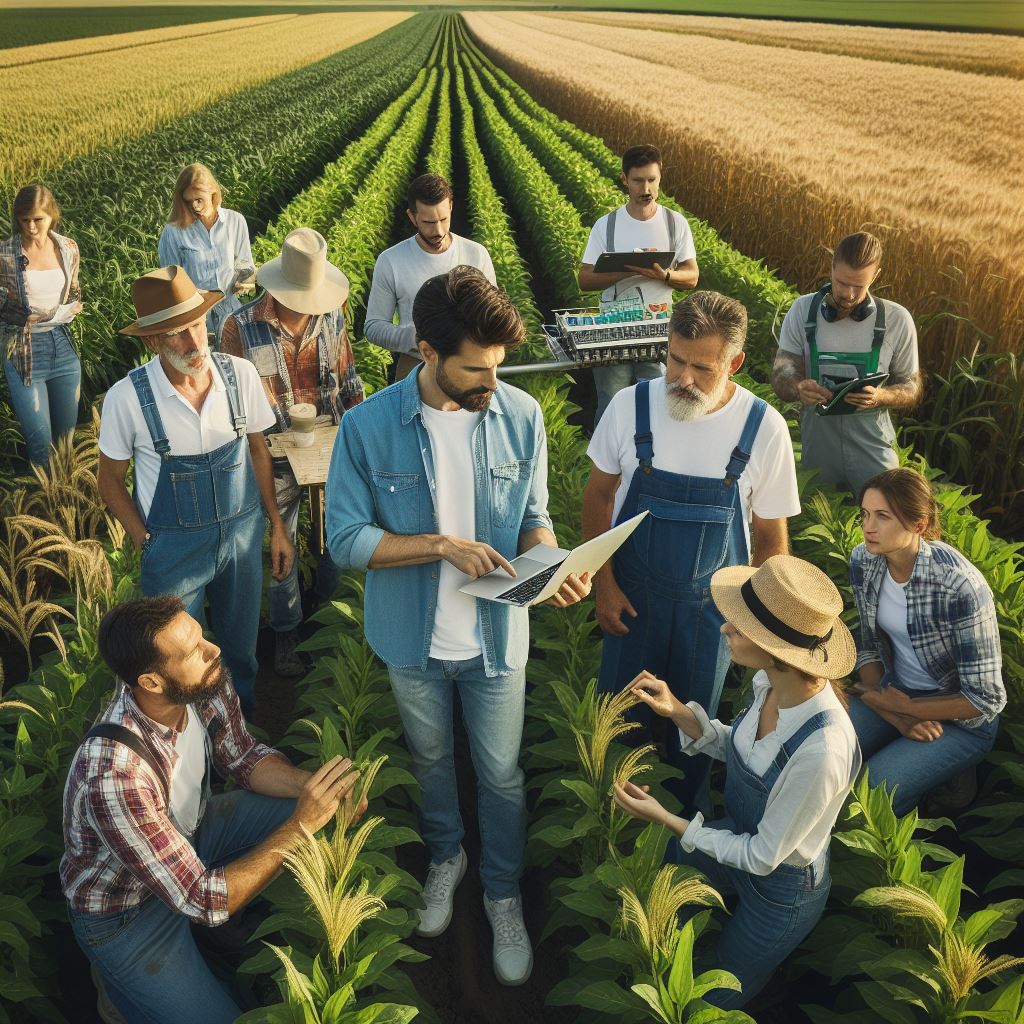Introduction
In today’s agricultural landscape, farmers often face a pivotal decision: organic or chemical farming. The choice between these two methods fundamentally shapes farming practices and outcomes.
With increasing environmental awareness and consumer demand for sustainable practices, organic farming has garnered significant attention in recent years.
The shift towards organic farming reflects a broader movement towards healthier, more environmentally friendly agricultural practices.
In this blog post, we will delve into the debate between organic and chemical farming, exploring the benefits, challenges, and considerations associated with each approach.
We examine soil health, crop yields, environmental impact, and market demand to offer farmers insights for informed decisions on farming methods.
By weighing the pros and cons of organic and chemical farming, farmers can better understand the implications of their choices and determine the most suitable approach for their specific circumstances.
Whether an experienced or new farmer, this post is a guide for transitioning to organic practices or exploring different farming methods.
Join us as we explore the innovative techniques and strategies that are reshaping the future of small-scale agriculture and paving the way for a more sustainable and resilient food system.
Understanding Organic Farming
Definition of organic farming and its key principles
Organic farming is a method of agriculture that emphasizes the use of natural inputs and practices to produce crops and raise livestock. It focuses on sustainability, biodiversity, and ecological balance.
The key principles of organic farming include:
- Soil Health: Organic farming focuses on enhancing soil health using organic matter, compost, and crop rotation, aiming to improve fertility and structure while reducing erosion.
- Ecological Balance: Organic farming promotes harmony among plants, animals, and their environment, advocating for natural habitat preservation and wildlife protection.
- Prohibition of Synthetic Inputs: Organic farming strictly prohibits synthetic pesticides, herbicides, fertilizers, GMOs, and growth hormones, relying on natural pest control methods.
Benefits of organic farming
- Lower environmental impact: Organic farming practices reduce environmental impact by avoiding synthetic inputs, thus decreasing air, water, and soil pollution.
- Avoidance of synthetic pesticides and fertilizers: Eliminating synthetic pesticides and fertilizers in organic farming reduces risks of harm to human health and the environment.
- Healthier soil and biodiversity: Organic farming enriches soil fertility and structure through practices like composting and crop rotation, fostering biodiversity and nutrient cycling.
- Potential for higher nutrient content in produce: Studies indicate organic crops may contain elevated levels of antioxidants due to soil nourishment and organic farming practices.
Potential drawbacks or challenges of organic farming
- Higher production costs: Strict organic standards and the need for manual weed and pest control increase labor demands in organic farming.
- Increased labor requirements: Organic farmers may invest more time and effort in weed and pest management due to the lack of synthetic inputs.
- Greater susceptibility to certain pests and diseases: Organic farms face vulnerability to pests and diseases without synthetic pesticides, requiring alternative pest control methods like biological control.
In short, organic farming is a sustainable and environmentally-friendly approach to agriculture that prioritizes soil health, ecological balance, and the avoidance of synthetic inputs.
It offers benefits such as lower environmental impact, healthier soil, and potentially more nutrient-rich produce.
However, organic farming also comes with challenges, including higher production costs, increased labor requirements, and greater susceptibility to certain pests and diseases.
Despite these drawbacks, the advantages of organic farming make it an appealing choice for individuals seeking a more sustainable and natural food system.
Read: Vegetable Harvest Hints for Gardeners
Transform Your Agribusiness
Unlock your farm's potential with expert advice tailored to your needs. Get actionable steps that drive real results.
Get StartedExploring Chemical Farming
Definition of chemical farming and its common practices
Chemical farming, also known as conventional farming, relies on the use of synthetic fertilizers, pesticides, and herbicides to maximize crop production.
It has become a prevalent practice globally due to its perceived advantages.
However, it also raises concerns about its potential negative impacts on both human health and the environment.
Benefits of chemical farming
- Higher crop yields: Chemical farming achieves higher crop yields by using synthetic fertilizers to provide essential nutrients, ensuring better growth.
- Lower production costs: Chemical farming lowers production costs by using affordable synthetic fertilizers and pesticides, reducing labor and equipment expenses.
- Easier pest and disease control: Synthetic pesticides in chemical farming effectively combat harmful insects and diseases, simplifying pest and disease control for farmers.
The potential negative impacts of chemical farming
- Harmful effects on human health and the environment: The extensive use of chemicals in farming practices can harm human health and the environment.
- Soil degradation and loss of biodiversity: Continuous application of synthetic fertilizers depletes soil fertility, reducing nutrient absorption by plants and altering composition.
- Concerns about residue in food products: Consumers worry about potential chemical residues in crops from chemical farming, which may have long-term health effects.
In essence, chemical farming offers benefits such as higher crop yields, lower production costs, and improved pest control.
However, the potential negative impacts on human health and the environment cannot be ignored.
It is crucial to strike a balance between maximizing productivity and minimizing the adverse effects of chemical farming.
Sustainable agricultural practices, such as organic farming, should also be considered as viable alternatives to lessen the dependency on synthetic chemicals and promote long-term environmental and human well-being.
Read: Organic Pest Control Explained
Factors to Consider when Choosing
Evaluate the specific needs of the farm or garden
Soil condition and fertility
When choosing between organic and chemical farming methods, it is crucial to evaluate the specific needs of your farm or garden.
One important factor to consider is the soil condition and fertility.
Organic farming relies on natural methods to enhance soil health, such as composting and crop rotation, while chemical farming uses synthetic fertilizers and pesticides.
If your soil is already in good condition and fertile, organic farming may be a suitable choice.
Climate and local conditions
Climate and local conditions also play a significant role in deciding between organic and chemical farming.
Organic farming practices are often better suited for certain climates, especially those with abundant rainfall and moderate temperatures.
Chemical farming, on the other hand, can provide more control over environmental factors and may be more suitable for farms located in extreme climates or regions with poor soil quality.
Consider the target market or consumer preferences
Demand for organic products
Another important aspect to consider is the target market or consumer preferences.
In recent years, there has been an increasing demand for organic products due to the growing awareness of the potential harmful effects of chemicals in food.
Consumers are becoming more conscious about their health and the environment, and they prefer organic products that are free from synthetic pesticides and fertilizers.
Consumer perception of chemicals in food
Consumer perception of chemicals in food also influences the choice between organic and chemical farming.
Some consumers have concerns about the long-term effects of consuming food grown with chemical inputs.
Choosing organic farming methods can cater to this consumer sentiment and help establish trust and loyalty among eco-conscious customers.
The financial implications of each farming method
Cost of inputs (fertilizers, pesticides, etc.)
- When choosing between organic and chemical farming, it is vital to assess the financial implications of each farming method.
- Organic farming generally requires higher upfront costs as organic inputs like fertilizers and pesticides tend to be more expensive than their chemical counterparts.
- The cost of labor in organic farming can also be higher due to the manual weed and pest control methods employed.
Potential selling price or premium for organic products
- On the other hand, organic products often command a premium price in the market due to their perceived quality and health benefits.
- Consumers are willing to pay more for products that are grown without the use of synthetic chemicals.
- Therefore, there is potential for higher profit margins in organic farming, although market demand and competition should also be considered.
In a nutshell, several factors need to be considered when choosing between organic and chemical farming methods.
Evaluating the specific needs of the farm or garden, considering the target market or consumer preferences, and assessing the financial implications are key steps in making the right decision.
By carefully weighing these factors, farmers and gardeners can determine the most suitable approach that aligns with their goals, resources, and values.
Showcase Your Farming Business
Publish your professional farming services profile on our blog for a one-time fee of $200 and reach a dedicated audience of farmers and agribusiness owners.
Publish Your ProfileRead: Eco-Friendly Pest Control in Modern Farming

Learn More: Chemical Fertilizers: Understanding Risks
Transitioning to Organic Farming
Strategies for farmers interested in transitioning to organic farming
Steps for achieving organic certification
- Understand the organic standards and requirements.
- Develop an organic system plan.
- Implement organic practices for a specified transition period.
- Maintain detailed records of inputs, practices, and products.
- Undergo annual inspections to ensure compliance.
Gradual transition methods to minimize risk
- Start by converting a small portion of the farm to organic practices.
- Gradually expand the organic area as farmers gain experience and confidence.
- Implement crop rotation and cover cropping to improve soil health and fertility.
- Gradually reduce the use of synthetic fertilizers, pesticides, and herbicides.
Potential challenges during the transition period
Control pests and diseases without synthetic chemicals
- Implement integrated pest management practices.
- Encourage natural predators and beneficial insects in the ecosystem.
- Use physical barriers, such as row covers, to protect crops.
- Rotate crops strategically to disrupt pest life cycles.
Manage nutrient inputs and soil fertility
- Focus on building healthy and fertile soil through organic practices.
- Use compost, cover crops, and crop rotations to enrich the soil.
- Monitor soil nutrient levels regularly to adjust organic fertilization.
- Consider utilizing organic amendments, such as bone meal or kelp, as approved.
The long-term benefits and rewards of organic farming
Reduction of chemical inputs
- Organic farming eliminates or minimizes the use of synthetic pesticides and fertilizers.
- It promotes a healthier environment, reducing chemical runoff into water bodies.
Enhanced soil health and biodiversity
- Organic practices improve soil structure, water retention, and nutrient cycling.
- Biodiversity increases, supporting beneficial organisms like pollinators and natural predators.
Improved product quality and taste
- Organic produce often exhibits better flavor, aroma, and nutritional value.
- Consumers value chemical-free products, leading to higher demand and premium prices.
Preservation of ecosystems and wildlife
- Organic farming protects wildlife habitats and reduces harm to non-target species.
- It contributes to the overall ecological balance and conservation efforts.
Long-term sustainability and resilience
- Organic farming promotes sustainable agricultural practices for future generations.
- It builds resilient farming systems, adapting to climate change and extreme weather events.
Read: Resilient Crops: Adapting to New Climates
Conclusion
Organic and chemical farming each have distinct advantages and disadvantages.
Organic farming promotes environmental sustainability and health benefits but may require more labor and higher costs.
On the other hand, chemical farming offers higher yields and lower production costs but raises concerns about health and environmental impacts.
Readers need to weigh these factors carefully and choose the approach that aligns with their goals, values, and resources.
Whether prioritizing environmental stewardship, maximizing productivity, or minimizing costs, farmers must consider the long-term implications of their farming methods.
By making informed decisions, farmers can contribute to sustainable agriculture and meet the needs of a growing population while safeguarding human health and the environment.




